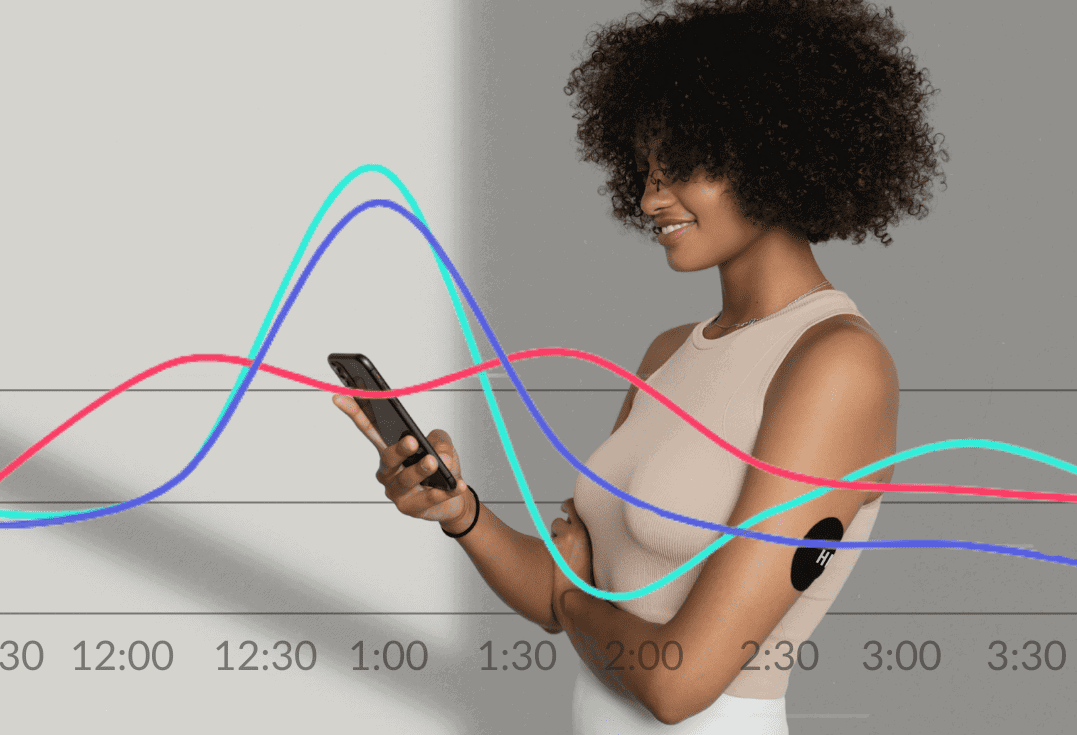Today we present our five best nutrition hacks for a healthy blood sugar curve.
And the best part? These tips are so simple that they can be incorporated into any diet and lifestyle.
A learning process
You may already know how important blood sugar levels are for staying healthy. But if the topic is new to you, don't worry! Here's a quick overview of everything you need to know.
What is a blood glucose curve?
Your body's blood sugar levels fluctuate naturally: They rise with each meal as food is digested and absorbed into the bloodstream, and fall as your cells absorb the glucose for energy. This pattern of rise and fall is called the "blood sugar curve."
However, not all blood sugar curves are the same. Blood sugar levels can rise or fall faster or slower, depending on a variety of factors such as diet, exercise, genetics, microbiome, and more. These differences can have a surprisingly powerful impact on your health.
The ideal blood sugar curve is a slow and steady curve that avoids rapid spikes.
In the short term, the sharp rise in blood sugar levels can make you feel tired, moody, and prone to cravings.
In the long term, this imbalance can lead to weight gain, cardiovascular problems, and thus more serious health problems.
At HELLO INSIDE, we're committed to educating you about blood sugar and its importance. We want to provide you with the tools you need to understand your blood sugar levels and make the best choices for your health.
Food is one of the immediate triggers for blood sugar spikes. Therefore, it's only logical that changing your eating habits is one of the best ways to work on improving your blood sugar curves.

Let's start with 5 nutritional tips for a stable blood sugar curve
Let's get straight to the life hacks you've been waiting for!
There are many healthy eating tips that can have a positive impact on your blood sugar. We've compiled a list of the top 5 that anyone can implement quickly and easily. If you're already doing some of these automatically, congratulations!
Tip #1: Choose products that are unsweetened and rich in fiber
From fruits and vegetables to grains and beans, fiber is an important component of plant-based foods. Unlike other food components, however, it is not broken down by the body and passes through the body undigested.
If this is your first time hearing about fiber, you might be wondering what you need it for?
Fiber plays a key role in keeping your digestion running smoothly. Because it's not absorbed, it helps flush waste from the intestines and eases bowel movements.
Fiber also provides structure to carbohydrates, which slows their digestion and absorption. [1]
This means that when you eat high-fiber foods, your blood sugar curve rises and falls more slowly. This contributes to the ideal, flatter curves.
In contrast, added simple sugars are absorbed into the bloodstream much more quickly, which in turn causes faster blood sugar spikes.
Our nutrition tip:
Try to eat more natural, high-fiber, low-carb foods. Top your yogurt with chia seeds and seasonal berries, or replace your slice of white bread with whole-grain bread.

Tip #2: Combine carbohydrates with protein and some fat
Eating only one food group is not only boring – it is also very unhealthy!
Carbohydrates are a key factor in how much our blood sugar levels rise. They are digested much more quickly. More variety in the form of protein and some fat can reduce these blood sugar reactions. [2] Because protein and fat take longer to digest than carbohydrates, they cause a gentler rise in blood sugar levels.
This type of varied diet can also stimulate insulin secretion, another important step in your body's natural blood sugar regulation.
Our nutrition tip:
Add variety to your plate! Don't eat pasta on its own. Mix it with some vegetables and add a portion of fish.
Tip #3: Eat vegetables and protein for the first course and save the carbohydrates for the second
Did you know that the order of foods when eating is important?
Eating vegetables and/or protein 15 minutes before eating carbohydrate-rich foods can lower your post-meal blood sugar levels by up to 73%! [3]
Our nutrition tip:
At dinner, treat yourself to a light chicken salad as a starter. Take your time and savor every bite. Pause for a while to digest, then move on to a more carbohydrate-rich dish like rice or pasta. And if your main meal includes a salad or vegetables, start with that.

Tip #4: Add a splash of apple cider vinegar
Recent studies have shown that apple cider vinegar can have a positive effect on blood sugar levels when consumed with carbohydrates. Just two tablespoons a day can make a difference!
It is believed that this vinegar can improve glucose absorption after a carbohydrate-rich meal and thus help stabilize blood sugar levels.
Our nutrition tip:
Say goodbye to store-bought dressing! Instead of smothering your healthy salad with a thick layer of sugary, dairy-laden dressing, opt for apple cider vinegar, high-quality olive oil, and light spices.
Tip #5: Keep your microbiome fit with fermented products
Fermented foods are rich in probiotics and promote the growth of bacteria in the gut—the good kind, of course! A special research project examining the fermented milk beverage kefir found that the beverage can also contribute to healthy blood sugar levels. The yogurt-like beverage has been shown to lower basal insulin and blood sugar levels.
Our nutrition tip:
Many people love kefir because it's a refreshing drink. But if you don't like the bitter taste, the fermented product can serve as a "superstar ingredient": Use kefir as a creamy base for a vegetable dip or add some to your smoothie for a probiotic boost.

Find your balance
It takes some time to realize how and what you eat – especially if the topic of healthy eating is new to you.
It's okay to focus on a single step at the beginning of your journey. You'll gradually discover what feels good for you.
These tips are a good starting point for a more conscious diet. You can incorporate these life hacks into your own routine in whatever way works best for you. Of course, there are many things that affect your blood sugar levels, but at least you have control over your diet.
And if you're interested in taking a closer look into the fascinating world of blood sugar, then pay attention: HELLO INSIDE is developing cutting-edge technology that can monitor your blood sugar in real time and give you precise insights into your health.
Which of our tips above will you try this week?
[1] Lattimer JM, Haub MD. Effects of dietary fiber and its components on metabolic health. Nutrients. 2010;2(12):1266-1289. doi:10.3390/nu2121266
[2] Moghaddam E, Vogt JA, Wolever TM. The effects of fat and protein on glycemic responses in nondiabetic humans vary with waist circumference, fasting plasma insulin, and dietary fiber intake [published correction appears in J Nutr. 2006 Dec;136(12):3084]. J Nutr. 2006;136(10):2506-2511. doi:10.1093/jn/136.10.2506
[3] Shukla AP, Iliescu RG, Thomas CE, Aronne LJ. Food Order Has a Significant Impact on Postprandial Glucose and Insulin Levels. Diabetes Care. 2015;38(7):e98-e99. doi:10.2337/dc15-0429




